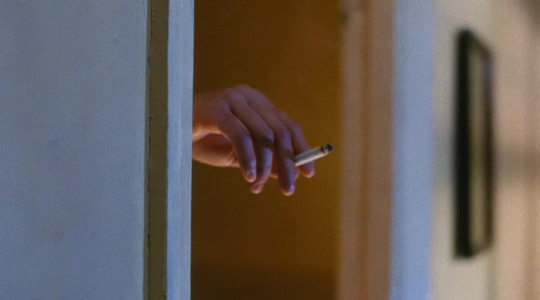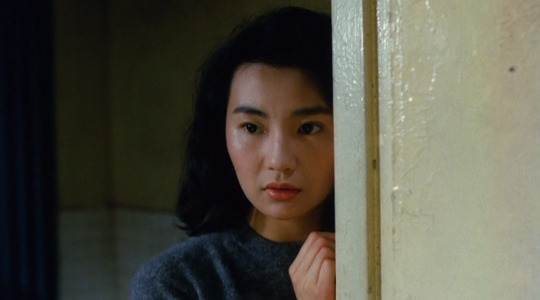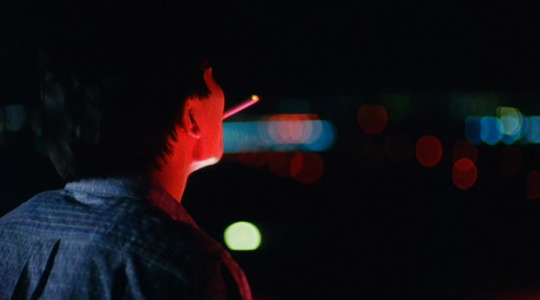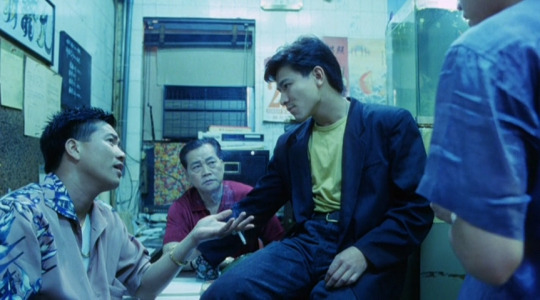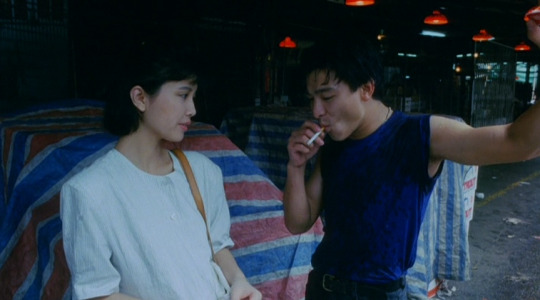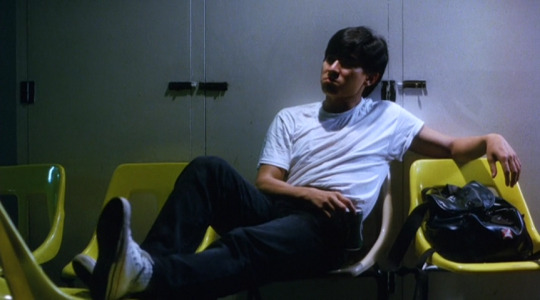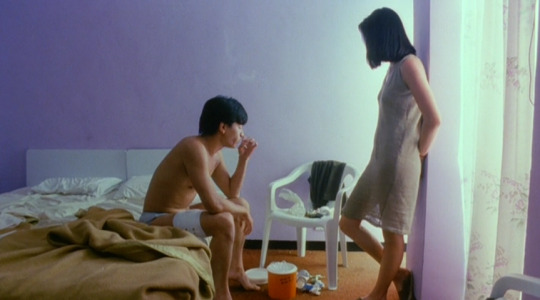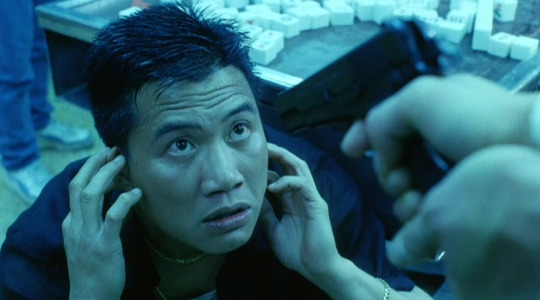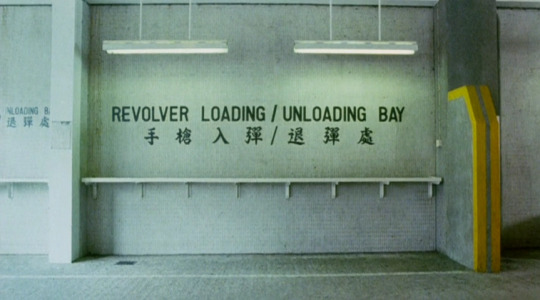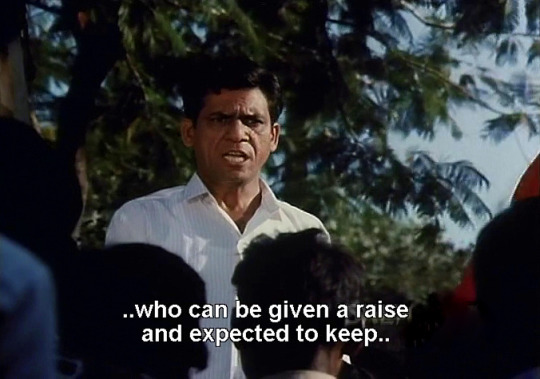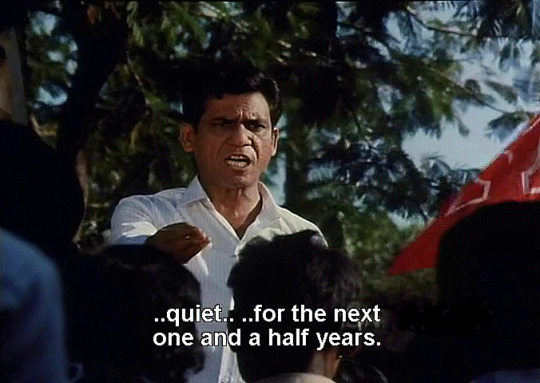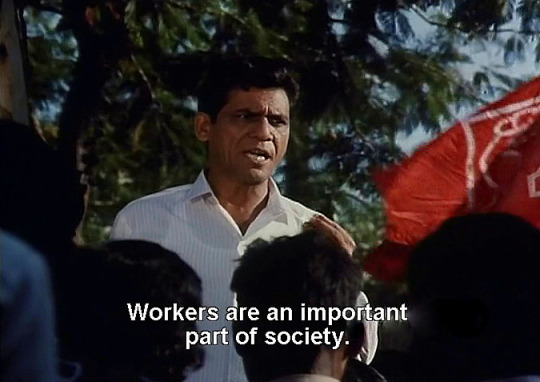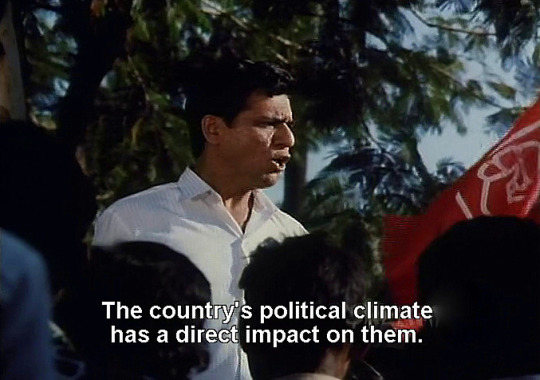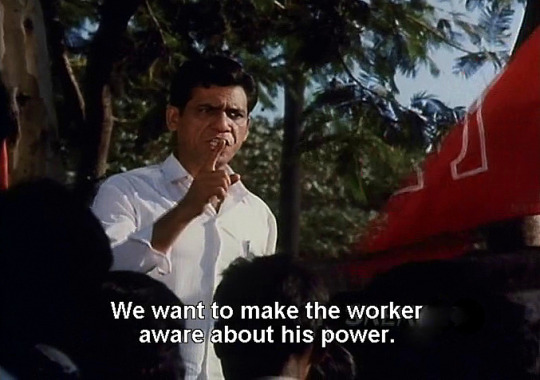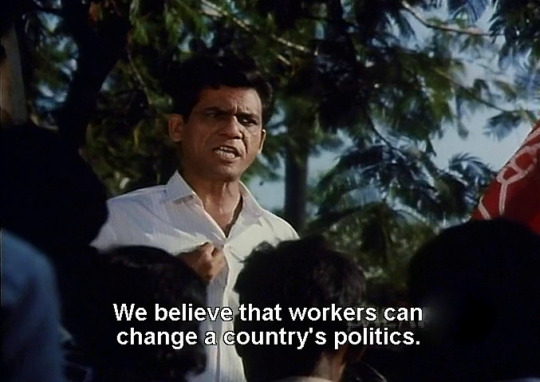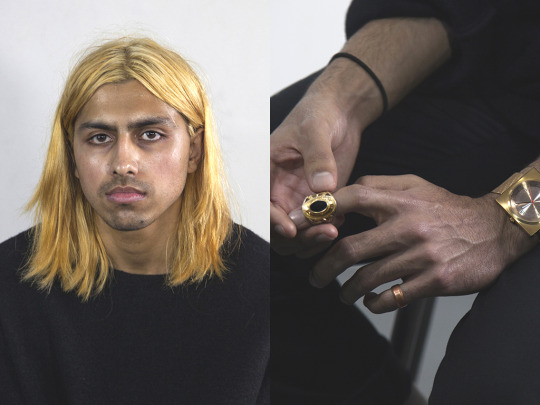Don't wanna be here? Send us removal request.
Photo

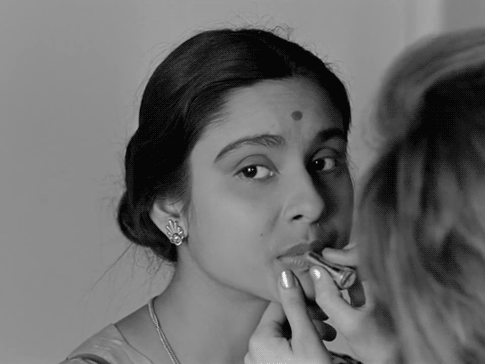

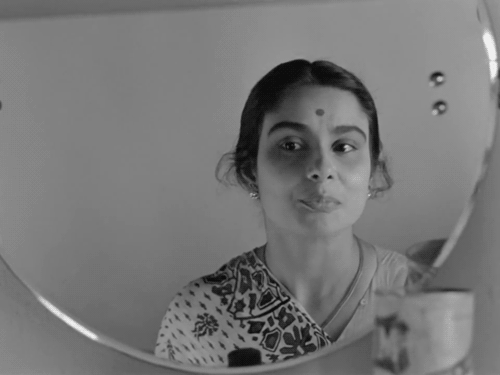

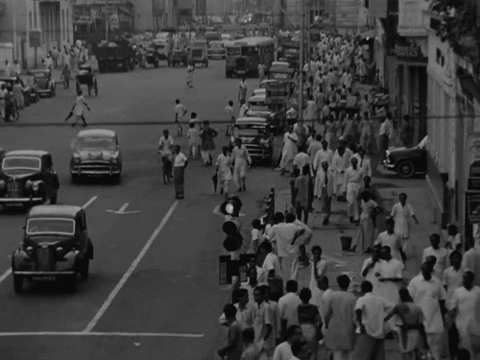

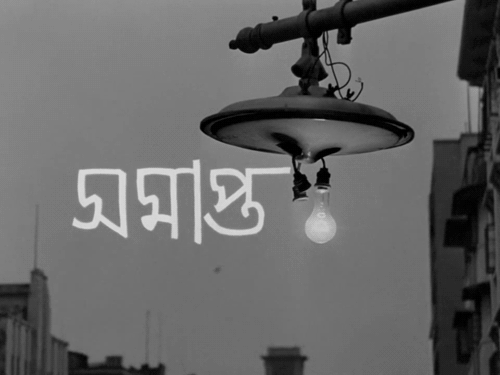
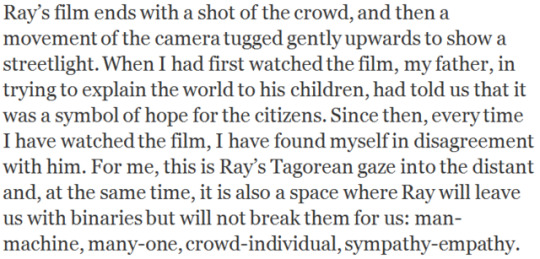
Sumana Roy on Mahanagar, The Big City (1963) in her essay “City”.
My father, like many first time visitors, came to the city by train.
It was the only time, he tells me, that his dream had come true. He meant this literally – the long journey, squatting in the passage near the door, the smell of yawns and the sticky matted hair at the end of the journey, even the faces of his co-passengers and the ticket collector, he had seen them all in his dream, night after night. He hadn’t seen it in a film, not yet, only read about it in a few novels that had found their way into the village school library.
His first journey to the city was, he likes to romanticise, the opposite of Satyajit Ray’s journey to Nischindipur, the village where his film Pather Panchali is set. A stale joke about their common surname later, he tells us how, when he watched the film for the first time, he had repeatedly looked at the projector light in an old cinema hall to see whether that beam of light which contained in it the journey from the city to the village, could also hold its opposite – the story about a journey to the city.
My first visit to the city was through a film: Satyajit Ray’s Mahanagar (“The Big City”). I was, I must emphasise, forced to watch this film. At that age, black and white films signified boredom to me: they made my mother weep and my father garrulous. It was my father, with his eccentric ideas about a child’s education (he had once made my brother and me stand outside in the dark, moonless night for four hours to overcome our fear of darkness!), who made us watch the film. He asked us, my brother and myself, to “swallow” the film. He used that word often in Bangla, especially when he made us memorise the names of all the plateaus in Asia, or eat bitter gourd on Sundays, or watch Ray and Ritwik Ghatak….
Keep reading
506 notes
·
View notes
Quote
True love is a different story. When it happens, individuals usually feel in touch with each other’s core identity. Embarking on such a relationship is frightening precisely because we feel there is no place to hide. We are known. All the ecstasy that we feel emerges as this love nurtures us and challenges us to grow and transform.
bell hooks, all about love: new visions (via oaluz)
i wanna add….. i don’t believe in having a single stable “core identity” so i think this quote can be applied to having multiple true loves all of whom bring out particular parts of you that feel truthful. that is when you have nowhere to hide. being “known” isn’t a totalising automatic thing but a process of ‘refining (our) truths’ like adrienne rich says. its articulating and rearticulating yourself in different contexts. the process is continual and there’s always going to be something left over.
but what is important is getting in touch with how it feels when you have nowhere to hide esp if we are accustomed to hiding from family or in other social settings that enforce judgment. new experiences (of being empathised with and accepted) painfully shed light on when you have had to put parts of yourself away. and that’s valuable emotional information for avoiding those self-effacing situations in the future - oaluz
2K notes
·
View notes
Photo













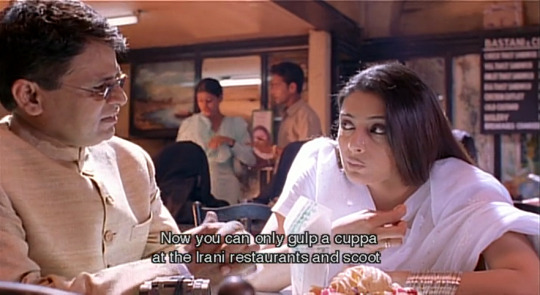
aaj ki chai is accompanied by history lessons and nostalgia for simpler days where a meeting over a cup of tea meant something in m.f. hussain’s last and most well-known feature film, meenaxi: tale of 3 cities (2004). peep m.f. hussain himself sitting at the same irani cafe tabu & raghubir yadav are at (where tabu’s booming voice frightens him just as he takes a sip).
289 notes
·
View notes
Text
Y'all know that individual health behaviors - choices around nutrition, exercise, smoking, etc. - only account for about 25% of a person’s health status? The determinants of health are largely social: income and education level, the safety of one’s physical environment (e.g. working conditions, clean water), and degree of social support. Trauma is far worse for health than fast food.
It’s tempting to subscribe to a just world theory, where good things happen to good people (or people who make good decisions), and problems befall problem people, but that just isn’t the world we live in.
Most sick people have spent their lives fighting against oppressive circumstances. They don’t invite illness and hardship with their bad decisions, they are miracles of survival in a sociopolitical environment that’s hostile to their very existence.
34K notes
·
View notes
Photo


Lemonade dir. Beyoncé Knowles, Kahlil Joseph
A Seat at the Table dir. Solange Knowles, Alan Ferguson
9K notes
·
View notes
Photo
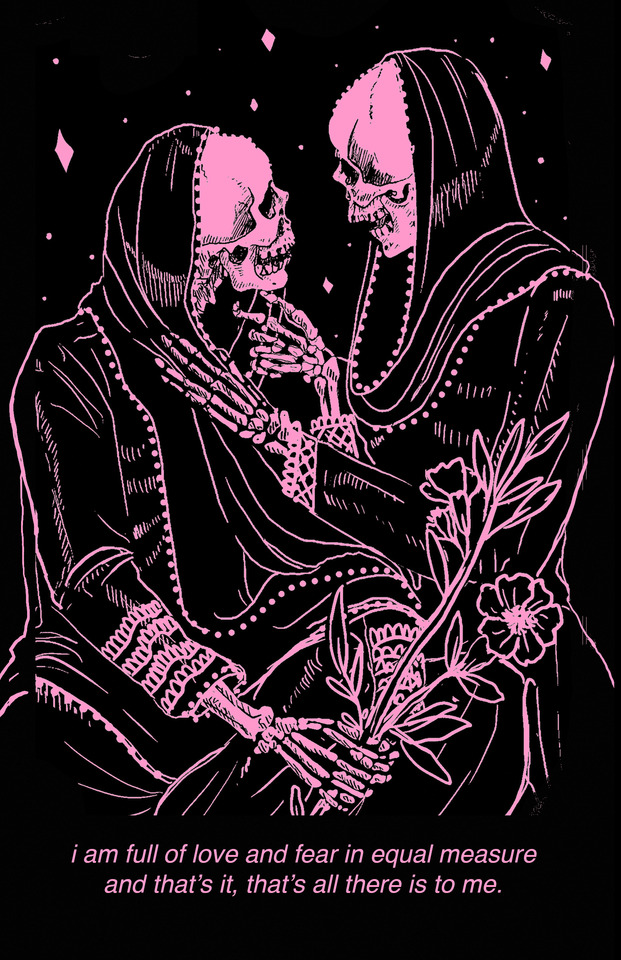


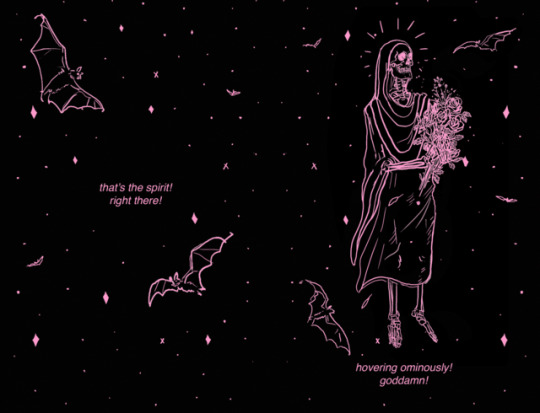


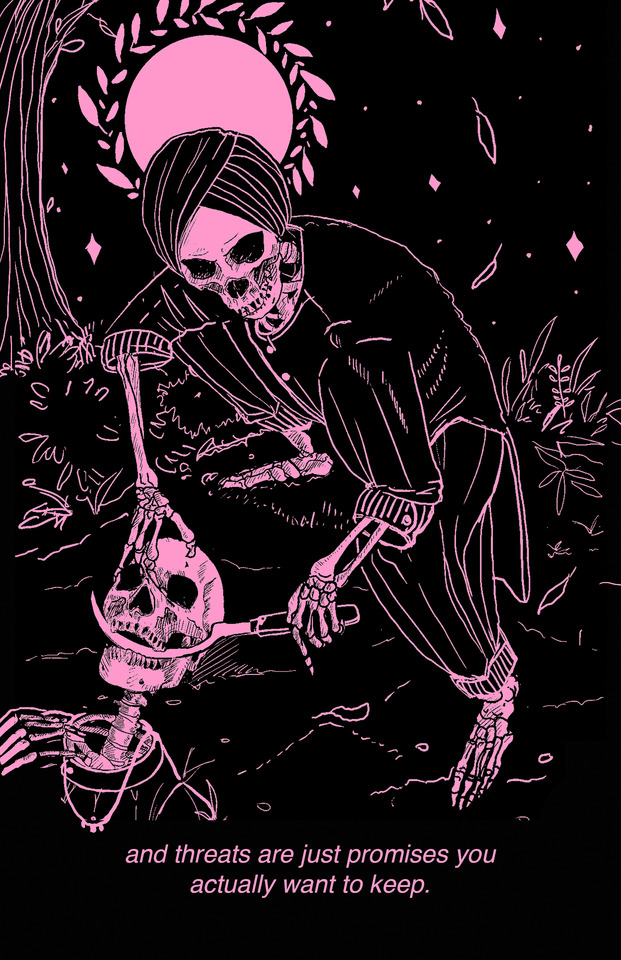
made flesh amrit brar, 2017
short semi-stream-of-consciousness zine. i like putting my art and textposts/tweets/random journaling stuff together, especially when they end up being unlikely companion pieces. a lot of these are illustrations from the marigold tarot with the accompanying notes/text i haven’t shared alongside the cards yet. i’m planning on bringing printed copies with me to short run in seattle this weekend!
| instagram | shop | patreon |
16K notes
·
View notes
Photo






Bita Ghezelayagh, from the series “The Letter that Never Arrived,” 2013 (source).
“The Letter That Never Arrived” or Nameh-i ke hargez naresid in Persian, evokes an interrupted correspondence - personal, cultural and political. “The history of Iran is full of letters from outspoken citizens warning their leaders of the consequences of their actions,” she explains. “So, too, the lives of many ordinary Iranians, myself included, are disjointed but also enriched through distance and displacement.”Ghezelayagh rescues unwanted, often threadbare carpets from homes in the West, and remodels them as shepherd’s cloaks derived from their Middle Eastern origins. She washes, deconstructs, disfigures and re-conceives these textiles, giving them a new life and dignity by placing them on a stand, transforming a floor covering into a sculpture. “The carpets are themselves hybrids, composed of more than one decorative tradition,” she says. “I make them more so. My pieces may include fragments of different carpets of varying styles and provenances, sewn together.” She then animates the works, building meaning through layering the cloaks with metal charms and embroidery and giving them a “breastplate” made from her personal collection of pen nibs.” (via)
410 notes
·
View notes
Photo

Shyam Benegal, Shabana Azmi and Smita Patil at Cannes when their film Nishant (1975) was in competition.
104 notes
·
View notes
Photo

Egypt, Cairo, 2000 - A limonade salesman in the souk
7K notes
·
View notes
Photo

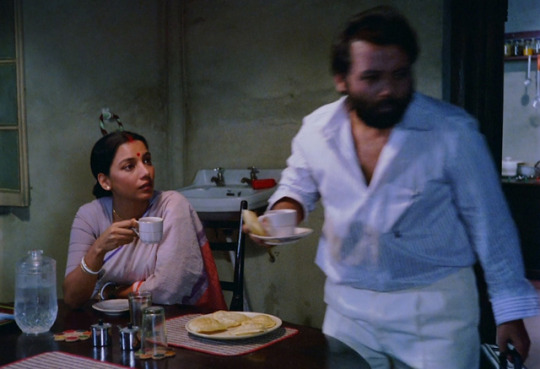




aaj ki chai is from this scene in tapan sinha’s ek doctor ki maut (1990). shabana azmi’s understated but poignant performance as seema, the wife of a brilliant doctor whose single obsession with his research brings selfishness and callousness to his marriage is so visceral, especially in small moments like this one. seema fries puris and make two cups of tea as she waits for her husband to come home, a familiar scene in the homes of many, especially within india. her husband talks about his research, the people he met, and lists all his complaints for the day before being cajoled into sitting at the dinner table. she serves the tea and the plate of puris and sits by his side, shoulder to shoulder, as a companion. then she talks about her conversation with her sister while gently reprimanding her husband for never calling those relatives back. he agrees to please her and then quickly grabs his cup of tea and two puris to leave for his lab. and seema! shocked and baffled, she tells him she’s not yet finished with her tea only to hear that familiar indifference–”then finish it”. and shabana azmi with all the subtlety she’s know for, moves from shock to bitter acceptance and then quickly back to the briefest expression of hurt.
and she drinks her cup of tea alone.
one thing i like about tapan sinha’s work in this film is that seema is her own person, not the archetype of a wife in indian films (even noncommercial ones) who only exists to mutely support and share the burden of her husband’s dreams. later in the film she expresses how that callousness feels and affects her, especially against the expectations of what she thought their marriage would be like–one in which she is cared for, one in which there is companionship. i feel like i know too many women in marriages who drink their cup of tea alone. or put too much hope into what differences a cup of tea can bridge.
6K notes
·
View notes
Note
Soo weird...I had a dream about you last night. We went out on a girl date and you were soo cute and shy.
~~~~eep~~~~~
3 notes
·
View notes
Photo

hi friends, it’s been a while. I have blonde hair now + work a 9-5.
84 notes
·
View notes
